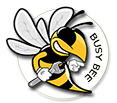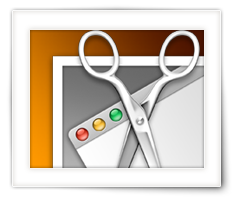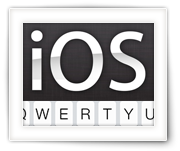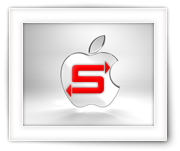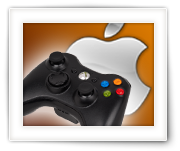As of today, version 1.6.1 of Name My TV Series has become available for Windows, MacOSX and Linux (32- and 64-bit).
This release fixes a bug with the import and export feature – which I overlooked when implementing AirDate.
Feel free leave a comment at the Rename your TV Series Files article, where you can also download the latest version.
Ad Blocking Detected Please consider disabling your ad blocker for our website.
We rely on these ads to be able to run our website.
You can of course support us in other ways (see Support Us on the left).
When developing an application, sometimes it can be useful to offer the user a way to add this application to the LoginItems (Mac) or Autorun items (Windows), so that the application starts when MacOS X or Windows starts.
Since I have developed a couple applications for which this would be helpful, and as of lately even one for both platforms, I figured, why not place this in a unit so the code can be resused easily and quickly. Sharing the code would make life easier for others as well.
So here we are – feel free to post improvements – a unit that Adds, Removes and Checks if an application build with Lazarus Pascal, from the Loginitem/Autorun items.
Wake On Lan, the Ethernet standard for waking up (switching them ON) network enabled devices remotely, has (again) gained popularity, especially under NAS/Server users, who use their server or NAS only a few hours a day. Wether it’s to save on your Power bill, reduce your Carbon-Footprint, or to spare your equipment, Wake On Lan is here to stay …
Now come these question though,… how do I enable Wake On Lan on my network enabled device, and how do I send a “wake up” call to my device?
In this article, I’ll try to cover as much as I can – since it can be a pretty hairy process to setup Wake On Lan. It very strongly depends on the hardware and software capabilities of your device. Even though I cannot every device on the planet, I sure will try to help you get started with Wake On Lan.
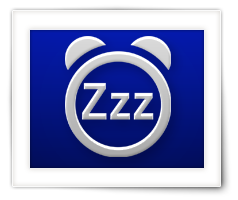
I had not used the good old Wake On LAN option in a while, until my brother-in-law (Jean-Pierre) was looking for something like that to wake up his NAS.
Most of the Wake On LAN applications I found for him were just too extensive, too complicated, or not free. I wanted just a simple menu in the System Tray (Windows: next to the clock, lower-left corner of your screen) or Menu-bar (MacOS X – top of your screen). Well, after quite a bit of searching I could not find anything suitable or to my liking and I decided to just write something myself.
Timing couldn’t be better, since I just wanted to implemented Wake On LAN in another application – ConnectMeNow (for MacOS X).
Reusing the code, making it suitable for Windows and MacOS X, and wrapping it in a small application was done relatively quickly.
This application has been tested under MacOS X 10.11 (El Capitan) and Windows 10 and it’s FREE.
Ad Blocking Detected Please consider disabling your ad blocker for our website.
We rely on these ads to be able to run our website.
You can of course support us in other ways (see Support Us on the left).
ConnectMeNow, a small application for Mac OS X to quickly mount network shares, has been updated to version 1.7.
In this version a few things have been changed, like the SSH icon, so it’s easier to distinguish in the dropdown menu.
Support for NFS has been added – but has not been tested (I do not have a NFS share available to test).
Additionally Wake On Lan has been implemented, including support for a custom port number (default is 9) and retrieving the MAC Address automatically (for this the “server” needs to be powered on, connected, and in the local network). With that I’ve add a “timer” that will wait x seconds before mounting a volume that has been woken up with Wake On Lan.
For download of the latest version, please read the original article (Quickly connect Network shares on a Mac with ConnectMeNow), where you can also ask questions or report issues. Or … find the application on our Downloads Page.
As of today, version 1.6 of Name My TV Series has become available for Windows, MacOSX and Linux (32- and 64-bit).
This release fixes a bug with the “%S1” parameter, and adds an AirDate field (%AD) which can be used in filenames. Additionally, the file created/modified date can be set to the first air date as well.
Further more, “EPGuide” has been removed as a source, since TheTVDB usually provides better information, and “EPGuide” has proven to be unreliable when it comes to parsing data.
Feel free leave a comment at the Rename your TV Series Files article, where you can also download the latest version.
I’ve been asked several times in the past, on how to take screenshot and annotate them afterwards, or how to do a so called “print-screen” to a printer for a hardcopy.
Some users, use screenshots for illustrating manuals, or articles for their website. Some use it to print error messages or odd things happening on their screen. And as with regular paper, some of us would like to annotate the images – add notes, comments, arrows, numbers or circle the important part of the image.
Annotating images is relatively easy, once you know where to find the tools to do this.
So in this article, for Mac OS X users: How to take screenshots, how to add annotations, and some additional related tips and tricks.
Ad Blocking Detected Please consider disabling your ad blocker for our website.
We rely on these ads to be able to run our website.
You can of course support us in other ways (see Support Us on the left).

ConnectMeNow, a small application for Mac OS X to quickly mount network shares, has been updated to version 1.6.
In this version I have added the requirement to enter an admin password to reveal passwords.
This way the tool can be used on machines used by users who should not see the actual password in a safe manner.
Additionally, even though the implementation of SSH isn’t the best, I’ve increased the time-out for waiting for login information request by the server. Initially this was 1 second and has now been increased to 2 seconds. The 1 second wait worked just fine, however, slower servers, like a server outside of your home or business network, might take too long to respond. In those cases a higher time-out value proved easier to work with.
With the help of Whistle Master, I’ve been able to add WebDAV support as well.
A minor bug when entering the server alias name has been resolved as well.
And finally, you might have noticed it already, I’ve changed the App icon.
For download of the latest version, please read the original article (Quickly connect Network shares on a Mac with ConnectMeNow), where you can also ask questions or report issues. Or … find the application on our Downloads Page.
Since I’m always looking for the “best” and “easiest” way to develop applications cross platform (so far Lazarus Pascal is the winner), I decided to give Delphi 10 Seattle a try. After I recovered from a heart-attack from seeing the price, I decided to give AppMethod a try. Mind you that AppMethod is cheaper but still very expensive.
AppMethod is pretty slick (as is Delphi 10), and supports Windows (32/64 bit), Mac OS X (I’m guessing 32 bit), Android, and iOS (32 bit and 64 bit). Development is pretty easy and deployment of your app is also very easy.
The first test I did was reading a webpage (NZBGet), which worked great on all platforms, except on iOS 9, which threw a “The resource could not be loaded because the App Transport Security policy requires the use of a secure connection” exception.
I did some research on what caused this and finally found the answer and a few work-arounds – which might be practical for other development environments as well.
As of today, version 1.5.1 of Name My TV Series has become available for Windows, MacOSX and Linux (32- and 64-bit).
This release fixes a minor bug and adds Retina support for Mac users.
Feel free leave a comment at the Rename your TV Series Files article, where you can also download the latest version.
Ad Blocking Detected Please consider disabling your ad blocker for our website.
We rely on these ads to be able to run our website.
You can of course support us in other ways (see Support Us on the left).

As of today, version 1.5.0 of Name My TV Series has become available for Windows, MacOSX and Linux (32- and 64-bit).
This release adds a few new features and bug fixes.
– Bug fix for episodes >99 (bug 010 instead of 001)
– Added %E2 to auto grow leading zero’s when episode count >99
– Update TheTVDB logo
– Mac: Drag and Drop on Application works now as well.
– Bug fix: Drag and Drop RMVB files allowed
– Bug fix: Clear after rename now functional
– Registry data format changed to reflect new options
– Bug fix in Preferences: Update example string working again.
– Alternating Season colors in the complete episode list
– Alternating Season colors in Rename Scheme
– Bug fix: Windows storing temp images in application directory causes errors
– Bug Fix: German/French (non-Latin) Characters under Windows
– Bug Fix: Weird characters causing invalid integer error
– Bug fix: Shows that count with years now work properly
– Bug Fix: odd sorting, rewritten sorting routine from scratch
– Added %EC for using a total/sequential count of episodes.
– Default sort order is Airdate. Optional “DVD” sort order (check “DVD” and click “Get Episodes”)
– Broken Google search EPGuide fixed
– Handle 403 error from TheTVDB
I’m aware that more bugs/feature requests might be out there, feel free leave a comment at the Rename your TV Series Files article.

Back in the day, when Firewire was a standard for any Mac, we could use Firewire to directly connect one Mac to another and transfer files at a very respectable speed – the so called “Target Disk Mode” or “IP over Firewire”.
This did not only help us in sharing files between 2 Mac’s, it even allowed you to boot one Mac from the DVD or CDRom drive on the other Mac, which is great when you have only one Mac with a CD or DVD drive.
Unfortunately, Firewire has gone out of the graces of Apple and has been replaced with Thunderbolt (and USB 3.x), and the trick to connect 2 Mac to each other over a Firewire cable have been lost and forgotten.
Please keep in mind, in case you’re having old Mac’s that have Firewire: this works exactly the same as with FireWire, you’d just use a Firewire cable instead. The firewire trick works under Windows as well (see this old WeetHet.nl Article).
In this article, I’ll show you how you can have a very fast data transfer between two Mac’s, using a Thunderbolt cable.
You probably will not need this every day, and I admit that goes for me as well. Today however I needed this: screen recording things I’d be doing on my iOS device (iPhone, iPad, iPod).
In the past we’d need to JailBreak our iOS device, but with the arrival of Mac OS X Yosemite (10.10) and iOS 8, we can do this straight on our Mac without any extra tools or tricks – just with the build-in tools from Mac OS X and iOS, in this case QuickTime.
In this article I’ll show you how you can make a screen recording (make a video of the screen of your iOS device) with a well hidden feature of QuickTime.
Ad Blocking Detected Please consider disabling your ad blocker for our website.
We rely on these ads to be able to run our website.
You can of course support us in other ways (see Support Us on the left).
If you’re a Mac user, and you’re enjoying the newer MacOS X versions, then you might have noticed that Apple’s own implementation of SMB simply sucks … it just doesn’t work and for a company like Apple to just leave it this way is beyond me.
SMB is a network protocol, commonly know as “Microsoft Windows Network” or Samba, which allows sharing of files and devices over a network. Most of us use this on our Windows computers and theoretically (it seems) MacOS X should support this as well.
For me it’s to share files with family, friends, or to share media files with my XBMC/Kodi setup.
In this article, I’ll show you how to quickly get started with a working Samba implementation, instead of using Apple’s broken implementation – for this we will make use of SMBUp.
I honestly had zero use for a XBox 360 Controller on my Mac, since I’m a keyboard/mouse gamer … but I was toying with another article (Kodi on Amazon Fire TV) and was looking for a Game Controller for the Amazon Fire TV.
Looking around I noticed that the Microsoft XBox 360 wireless controller for Windows should work with the Amazon Fire TV and with MacOS X. Since I do play the occasional game on my Mac (yes: that is possible!) with Steam, I figured why not give it a try. The controller, with receiver, isn’t all that expensive.
So in this article: How to connect and use an Xbox 360 Controller on MacOS X …
TIP: For those of you who are trying to get this to work with an XBox One Controller, please read the “Bluetooth XBox One controller on a Mac” article as well.
